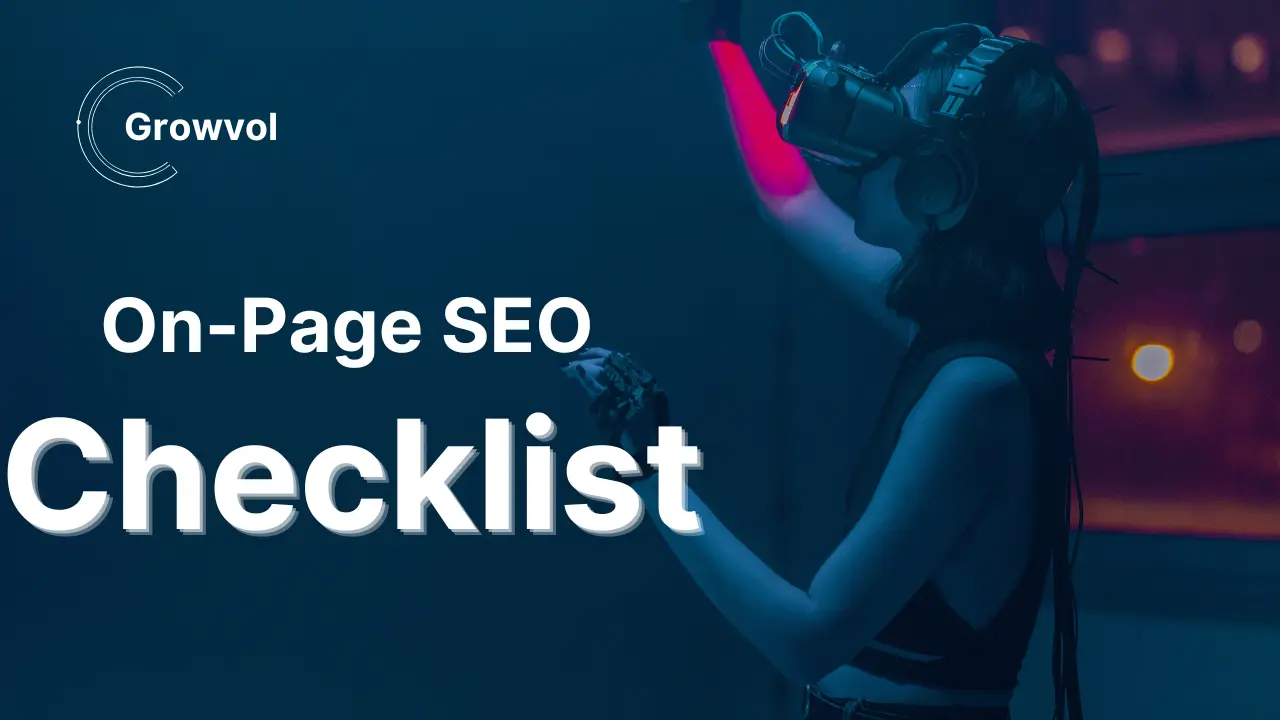Search Engine Optimization (SEO) is an ever-evolving discipline, but one thing remains constant: the importance of on-page SEO. By optimizing your website’s individual pages, you improve your chances of ranking higher in search engine results and provide a better user experience. Here’s the ultimate checklist to ensure your on-page SEO is on point for 2024.
1. Keyword Research and Placement
- Identify Target Keywords: Use tools like Google Keyword Planner, Ahrefs, or SEMrush to find high-traffic, low-competition keywords relevant to your niche.
- Primary Keyword Placement: Include your target keyword in the following key areas:
- Title tag
- Meta description
- First 100 words of content
- Headings (preferably H1 or H2)
- URL slug
- Avoid Keyword Stuffing: Maintain natural and relevant keyword usage to avoid penalties from search engines.

2. Title Tags and Meta Descriptions
- Craft a Compelling Title Tag:
- Keep it under 60 characters.
- Include your primary keyword.
- Make it engaging to encourage clicks.
- Optimize Meta Descriptions:
- Limit to 150-160 characters.
- Summarize the page content and include the target keyword.
- Use action-oriented language to entice users.

More Info:- How to Write Meta Title

More Info:– Meta Descriptions Explained
3. URL Structure
- Use short, descriptive URLs that include your target keyword.
- Avoid unnecessary words or symbols in your URL.
- Use hyphens (-) to separate words, not underscores (_).

4. Header Tags (H1-H6)
- Use a single H1 tag for the main heading, incorporating the primary keyword.
- Use H2 and H3 tags for subheadings to improve content hierarchy and readability.
- Ensure that your header tags are logical and descriptive.
More info:- What is Heading Tags
5. Content Optimization
- High-Quality Content: Ensure your content is original, engaging, and provides value to your audience.
- Length: Aim for a minimum of 1,000 words for in-depth coverage of a topic.
- Keyword Placement: Naturally incorporate primary and secondary keywords throughout the content.
- Answer User Intent: Address the questions or needs that brought users to your page.
- Include Multimedia: Use images, videos, and infographics to make your content interactive and engaging.
6. Internal and External Linking
- Internal Links:
- Link to relevant pages on your site to improve navigation and distribute link equity.
- Use descriptive anchor text.
- External Links:
- Link to high-authority, relevant sources to back up claims or provide additional information.
- Ensure external links open in a new tab to retain users on your site.

7. Image Optimization
- Use descriptive file names for images, including target keywords where appropriate.
- Optimize image size to improve page load speed without compromising quality.
- Add alt text to all images to enhance accessibility and help search engines understand the image content.
- Use modern file formats like WebP for better performance.
More Info:- How to optimize image and what is alt tags
8. Mobile-Friendliness
- Ensure your site is responsive and provides a seamless experience across devices.
- Use Google’s Mobile-Friendly Test tool to check compatibility.
- Optimize for touch navigation and ensure fonts are legible on smaller screens.
9. Page Speed Optimization
- Use tools like Google PageSpeed Insights or GTmetrix to analyze your site’s performance.
- Implement these improvements:
- Enable browser caching.
- Compress files with GZIP.
- Minify CSS, JavaScript, and HTML.
- Use a Content Delivery Network (CDN).
- Optimize server response time and reduce redirects.


10. Schema Markup
- Implement structured data to enhance search engine understanding of your content.
- Use schema types relevant to your content, such as Article, Product, FAQ, or Review.
- Test your structured data with Google’s Rich Results Test tool.
11. User Experience (UX) Optimization
- Improve readability with short paragraphs, bullet points, and adequate white space.
- Ensure clear navigation and a logical site structure.
- Use engaging CTAs (Call-to-Actions) to guide users.
- Test usability with tools like Hotjar or Crazy Egg.
12. Security (HTTPS)
- Ensure your site is secured with an SSL certificate.
- Use HTTPS to build trust with users and improve rankings.
13. Regular Audits
- Perform periodic SEO audits to identify and fix issues.
- Monitor performance with tools like Google Analytics and Search Console.
- Update outdated content to maintain relevance.
Conclusion
Mastering on-page SEO is essential for achieving long-term success in search engine rankings. By following this comprehensive checklist, you’ll not only enhance your site’s visibility but also provide an outstanding experience for your users. Start optimizing today and watch your website climb the search engine results pages!

Leave a Reply